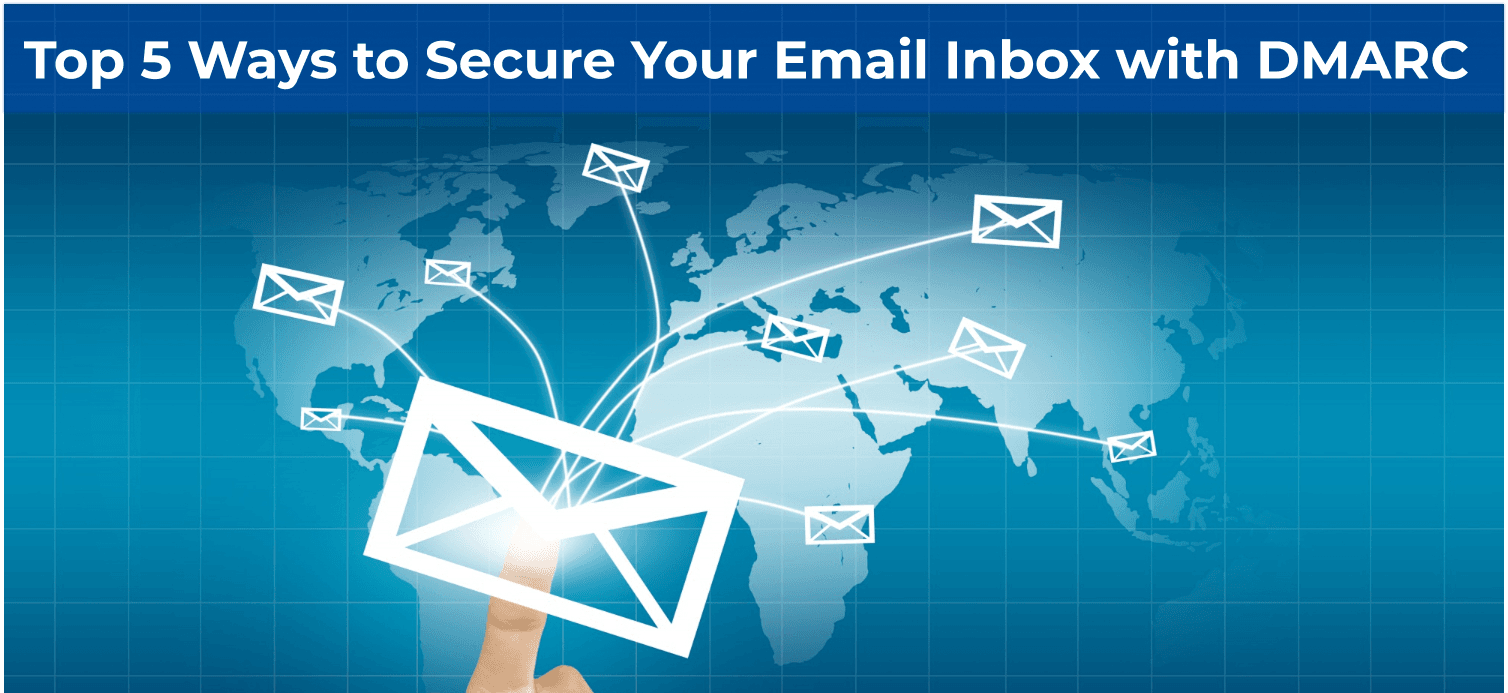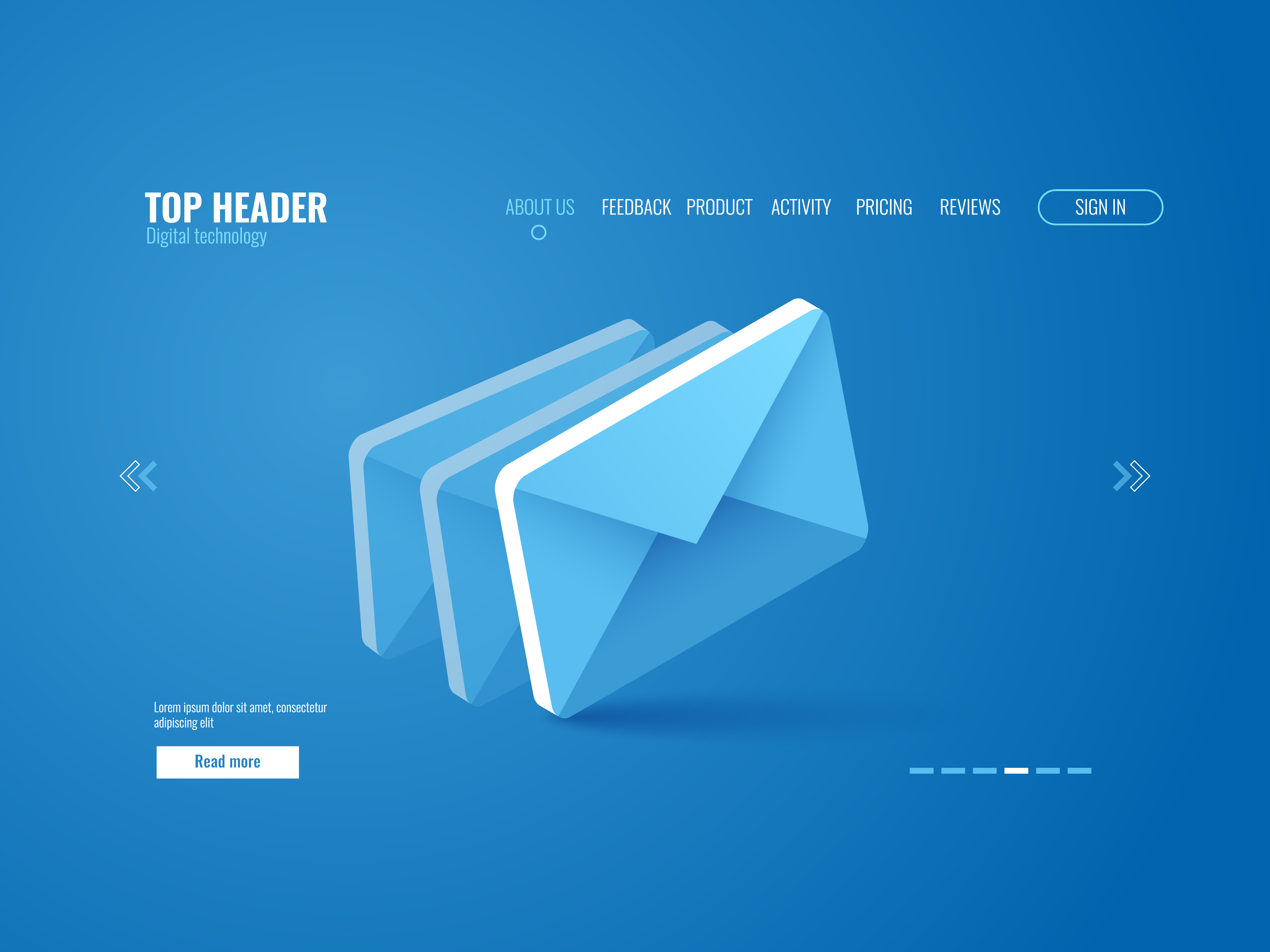Top 5 Ways to Secure Your Email Inbox with DMARC
Protect your inbox from phishing and spoofing with DMARC! Learn the top 5 ways to secure your email, prevent fraud, and ensure deliverability. Strengthen your domain’s security and keep cyber threats at bay with these expert tips.

In today's Computerized world, email fraud and phishing attacks are among the most common cyber threats. Protecting your inbox and ensuring the authenticity of your emails is crucial to safeguarding sensitive data. In this guide, we'll explore how DMARC can help you secure your email inbox and reduce the risk of malicious activities.
**Understanding the Basics of DMARC**
DMARC (Domain-based Message Authentication, Reporting & Conformance) is an email authentication protocol designed to protect your domain from email spoofing, phishing, and other types of fraudulent activities. By implementing DMARC, you gain greater control over your email security and protect your brand’s reputation.
DMARC works in conjunction with two other email authentication protocols: SPF (Sender Policy Framework) and DKIM (DomainKeys Identified Mail). SPF checks whether the email is sent from an authorized server, while DKIM ensures the integrity of the email content.
By combining these protocols, DMARC enables you to define how email receivers should handle emails that fail authentication checks. DMARC also provides valuable reporting data to help monitor and adjust email traffic from your domain.
**For more information on DKIM, please see the following Support base articles:**
[**How DMARC Benefits Industries: A Technical Guide to Email Compliance**](https://support.yourdmarc.com/en/articles/10469789-how-dmarc-benefits-industries-a-technical-guide-to-email-compliance)
[**What Happens When DMARC Policy is Set to ‘None’: Pros and Cons**](https://support.yourdmarc.com/en/articles/10473845-what-happens-when-dmarc-policy-is-set-to-none-pros-and-cons)
With DMARC, you can enforce email authentication across industries, ensuring compliance and preventing spoofing. A strict policy enhances security, while a 'None' policy allows monitoring without blocking emails, helping businesses analyze threats before enforcing stricter controls.
Here are the first 5 steps you should know:
**1. Prevent Email Spoofing**
Email spoofing occurs when malicious actors send emails that appear to be from a trusted source. DMARC prevents unauthorized senders from using your domain, ensuring that only authorized emails are sent on your behalf. By setting up DMARC, you protect your email reputation and reduce the risk of spoofing.
**2. Reduce Phishing Attacks**
Phishing attacks use fraudulent emails to trick recipients into revealing sensitive information. DMARC helps prevent phishing by verifying the authenticity of incoming emails. When properly configured, DMARC ensures that only legitimate emails from trusted senders reach your inbox, significantly lowering the chances of falling victim to phishing scams.
**3. Improve Email Deliverability**
Implementing DMARC can also enhance your email deliverability. When email receivers see that your domain is protected by DMARC, they are more likely to trust your emails and deliver them to the inbox, rather than marking them as spam. This improves your chances of successful email communication.
**4. Gain Visibility and Control**
DMARC provides detailed reports that allow you to monitor email traffic from your domain. These reports give you insights into who is sending emails on your behalf, whether they pass authentication checks, and if there are any unauthorized sources. This visibility enables you to take proactive measures to protect your domain.
**5. Implement DMARC Policies for Greater Security**
To maximize the security of your email inbox, follow these DMARC implementation best practices:
- **Start with Monitoring:** Before enforcing strict DMARC policies, begin by monitoring email traffic and reviewing the DMARC reports. This helps you understand the sources of your email traffic and identify potential security issues.
- **Enable SPF and DKIM:** Ensure that your domain has properly configured SPF and DKIM records. SPF helps verify the authorized IP addresses for sending emails, while DKIM adds a cryptographic signature to verify the integrity of your emails.
- **Gradually Enforce DMARC Policies:** Start with a "monitor only" policy (p=none) and analyze the reports. Once you’ve identified the sources of email traffic and resolved any issues, switch to more restrictive policies, such as "quarantine" (p=quarantine) or "reject" (p=reject), to prevent unauthorized emails from reaching inboxes.
**Monitoring and Analyzing DMARC Reports**
To keep your email inbox secure, regularly monitor and analyze your DMARC reports. These reports provide information about email senders and any failed SPF or DKIM checks, allowing you to identify suspicious activity and adjust your DMARC policy accordingly.
**Stay Ahead of Email Fraud and Phishing Attacks**
In addition to implementing DMARC, it’s essential to stay vigilant against email fraud and phishing attacks:
- **Educate Your Employees:** Teach employees how to recognize phishing emails and avoid clicking on suspicious links.
- **Enable Multi-Factor Authentication (MFA):** Use MFA for email accounts to add an extra layer of protection against unauthorized access.
- **Stay Updated:** Regularly update your email systems and security protocols to stay ahead of emerging threats.
**Wrapping Up: Take Control of Your Email Security**
DMARC is a powerful tool in securing your email inbox and preventing phishing attacks. By following best practices for DMARC implementation and monitoring reports, you can protect your domain, improve email deliverability, and reduce the risk of fraud and impersonation. Start securing your email inbox today with DMARC and safeguard your sensitive information from potential cyber threats.
For more information on how to secure your domain’s email inbox and how DMARC works, check out our latest blogs on [**yourDMARC**](https://www.yourdmarc.com/blogs)
